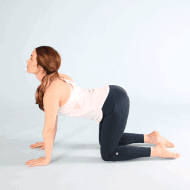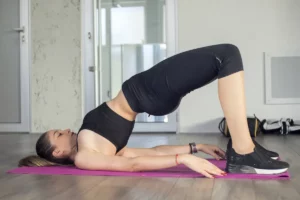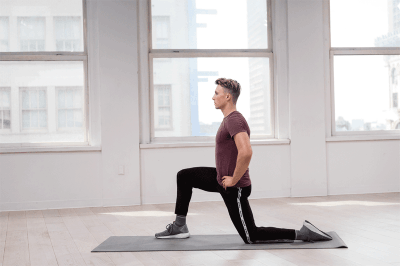Back scoliosis, a complex curvature of the spine, has become a growing concern for many individuals and families. It’s a condition that can affect people of all ages, bringing with it a myriad of symptoms and challenges that can significantly impact daily life. In this enlightening journey through the world of back scoliosis, we’ll unravel everything you need to know about this intricate condition. From the subtle symptoms that may hint at its presence to the cutting-edge treatments that offer hope and healing, we’ve got it all covered. So, let’s dive in!
Contents
Understanding Back Scoliosis
 Back scoliosis is more than just a term you might hear at a medical appointment; it’s a reality that affects millions worldwide. But what exactly is back scoliosis, and why is it crucial to understand it?
Back scoliosis is more than just a term you might hear at a medical appointment; it’s a reality that affects millions worldwide. But what exactly is back scoliosis, and why is it crucial to understand it?
What Is Back Scoliosis? Back scoliosis is a spinal deformity characterized by an abnormal, sideways curvature of the spine. This curve can take various shapes and forms and may occur at any age, often first presenting in childhood or adolescence. While some curves are subtle and nearly imperceptible, others can be more pronounced and noticeable.
Types of Back Scoliosis
Understanding the complexity of back scoliosis begins with recognizing its diverse types. Here are some of the most common:
- Idiopathic Scoliosis: Often diagnosed in adolescence, the cause of idiopathic scoliosis is unknown, making it the most common form.
- Congenital Scoliosis: This type occurs when a baby’s spine develops abnormally during pregnancy.
- Neuromuscular Scoliosis: Associated with conditions like cerebral palsy or muscular dystrophy, this form is caused by disorders of the nervous or muscular systems.
- Degenerative Scoliosis: Generally found in adults, degenerative scoliosis occurs due to the natural aging process and wear and tear on the spine.
Why Understanding Back Scoliosis Is Crucial?
Understanding back scoliosis is about more than medical jargon; it’s about awareness and empowerment. Knowledge of this condition aids in early detection, allowing for timely intervention and potentially minimizing progression. Comprehending the types of scoliosis and their underlying causes can lead to more personalized and effective treatment plans.
For those living with back scoliosis or caring for someone who is, understanding this condition is essential for fostering empathy, compassion, and informed decision-making. It lays the groundwork for a proactive approach to health and well-being, turning information into action.
Symptoms of Back Scoliosis
 Back scoliosis can present itself in various ways, and the symptoms might vary from person to person. Understanding these signs is vital for early detection and intervention. Here are some common physical manifestations and discomforts associated with back scoliosis:
Back scoliosis can present itself in various ways, and the symptoms might vary from person to person. Understanding these signs is vital for early detection and intervention. Here are some common physical manifestations and discomforts associated with back scoliosis:
- Uneven Shoulders: One shoulder may appear higher than the other, noticeable especially when standing straight.
- Asymmetrical Waist or Hips: This can lead to one hip appearing higher or more prominent, affecting posture and balance.
- Visible Curvature: In more pronounced cases, the curve of the spine may be visibly apparent, especially when bending forward.
- Rib Prominence: One side of the rib cage may appear more pronounced due to the twisting of the spine.
- Back Pain: Discomfort and pain in the back may be a frequent concern, ranging from mild to severe.
- Difficulty Breathing: In severe cases, the curvature may affect lung function, leading to shortness of breath.
- Fatigue: General tiredness or fatigue might occur, especially after long periods of standing or sitting.
- Changes in Gait: Walking patterns may be affected due to uneven hips or legs, leading to an altered gait.
- Muscle Spasms: Sudden and involuntary muscle contractions can occur around the curved area.
- Head Tilt: The head may not be centered over the pelvis, leading to a noticeable tilt.
It’s essential to note that back scoliosis symptoms can be subtle, especially in the early stages. Not everyone with scoliosis will experience all of these symptoms, and some may have no noticeable symptoms at all.
How Back Scoliosis is Diagnosed?
Diagnosing back scoliosis is a systematic process involving multiple steps, from initial observations to advanced imaging studies. The goal is to not only confirm the presence of scoliosis but also to understand its type, severity, and underlying cause if possible. Here’s a breakdown of the common diagnostic methods:
Physical Examinations
 Physical examinations are often the first step in diagnosing back scoliosis. Healthcare professionals may perform the following:
Physical examinations are often the first step in diagnosing back scoliosis. Healthcare professionals may perform the following:
- Visual Inspection: A careful observation of the back, shoulders, hips, and waist to check for asymmetry or unevenness.
- Bending Test: The patient may be asked to bend forward to better visualize any spinal curvature.
- Range of Motion Assessment: This test helps assess the spine’s flexibility and any restrictions in movement.
Imaging Studies
Modern technology has equipped healthcare professionals with various imaging tools to visualize the spine’s structure:
- X-rays: Most commonly used, X-rays provide a clear image of the spinal curvature and can help determine its angle and severity.
- MRI (Magnetic Resonance Imaging): MRI may be used to obtain detailed images of the spine, particularly if there are concerns about underlying neurological issues.
- CT Scan (Computed Tomography): A CT scan offers a comprehensive view of the spine and can be useful in complex cases.
Professional Consultations
 In many cases, a multidisciplinary approach is essential. Different healthcare specialists might be involved, including:
In many cases, a multidisciplinary approach is essential. Different healthcare specialists might be involved, including:
- Orthopedic Specialists: They have specific expertise in diagnosing and managing spinal deformities.
- Neurologists: If neurological symptoms are present, a neurologist may be consulted to assess underlying conditions.
- Physical Therapists: They can provide an assessment of physical function and contribute to ongoing management.
Scoliometer Measurement
A scoliometer is a specialized tool that some practitioners might use to measure the angle of trunk rotation. It’s a non-invasive way to assess spinal curvature during a physical examination.
The diagnosis of back scoliosis is multifaceted, involving a combination of visual assessments, physical tests, imaging studies, and consultations with specialized professionals. Understanding these diagnostic methods can demystify the process and better prepare patients and families for what to expect.
Treatment Options To Fix Back Scoliosis

The treatment of back scoliosis is a multifaceted approach, tailored to the individual’s specific condition, age, severity of the curve, and other underlying factors. The goal is to prevent progression, alleviate symptoms, and improve overall quality of life. Here’s an overview of the main treatment options:
Therapy and Exercises
Physical therapy and targeted exercises are often the cornerstone of managing mild to moderate scoliosis:
- Physical Therapy: Specialized therapists may work on strengthening and stretching exercises to improve posture, balance, and flexibility.
- Schroth Method: A specific scoliosis therapy that employs exercises to de-rotate, elongate, and stabilize the spine.
Bracing
For adolescents with growing spines and curves that are at risk of progressing, bracing can be an effective treatment:
- Wearing a Brace: Custom-fitted braces are designed to prevent curve progression by holding the spine in a straighter position.
- Types of Braces: There are various types of braces, like the Boston brace or Milwaukee brace, each with unique characteristics and purposes.
Surgery
In more severe cases, particularly when the curvature is significantly impacting daily life or health, surgery may be considered:
- Spinal Fusion: This surgery involves fusing vertebrae together to correct the curvature and prevent further progression.
- Growing Rods: For younger children, growing rods may be used to allow continued growth while controlling the curve.
Lifestyle and Alternative Treatments
Some individuals may benefit from complementary approaches and lifestyle changes:
- Chiropractic Care: Some find relief through chiropractic adjustments, although this approach is often used in conjunction with other treatments.
- Nutritional Support: Proper nutrition and maintaining a healthy weight can support overall spine health.
- Pain Management: Techniques such as acupuncture or massage might be part of a pain management plan.
The treatment of back scoliosis is highly individualized, often requiring a multidisciplinary approach. Regular monitoring and ongoing communication with healthcare providers are essential to ensure that the chosen treatment aligns with the patient’s specific needs and goals.
Exercises and Physical Therapy To Manage Back Scoliosis
Physical therapy and targeted exercises are pivotal in managing back scoliosis, focusing on improving posture, enhancing mobility, and relieving pain. By working with physical therapists specializing in scoliosis, patients can engage in programs tailored to their specific needs. Here are some exercises and techniques commonly used in therapy for back scoliosis:
Stretching Exercises

- Cat-Cow Stretch: Helps to improve spinal flexibility by arching and rounding the back in coordination with breath.
- Side Stretch: Targets the sides of the torso to alleviate tightness and promote a more balanced posture.
Strengthening Exercises

- Plank Holds: Enhances core stability, aligning the spine and building strength.
- Bridges: Strengthens the back and gluteal muscles, supporting spinal alignment.
Schroth Method Techniques

The Schroth Method is a specialized approach that includes exercises specifically designed for scoliosis:
- Muscular Symmetry Exercises: Focus on re-balancing muscles around the spine.
- Breathing Techniques: Specific breathing exercises that help de-rotate the spine.
- Postural Awareness Training: Educates patients on maintaining proper posture during daily activities.
Pelvic Alignment

- Pelvic Tilts: Helps in aligning the pelvis, an essential aspect of spinal health.
- Hip Flexor Stretches: Can alleviate tightness that often accompanies scoliosis.
Pain Relief Techniques
- Heat or Cold Therapy: Applying heat or cold can soothe muscle discomfort around the affected area.
- Massage and Manual Therapy: Therapists may use hands-on techniques to relieve muscle tension and promote relaxation.
Conclusion
Back scoliosis is a complex and multifaceted condition that requires awareness, early detection, and a personalized approach to treatment. From understanding the symptoms to exploring various treatment options, including exercises and physical therapy, we’ve delved into the key aspects of managing and living with back scoliosis. Knowledge is power, and with the right information and professional guidance, managing this condition becomes a journey marked by informed decisions and positive steps towards well-being.
If you’re experiencing Back pain, physical therapy for back pain at PhysioMantra can help: Book an online physical therapy session.



